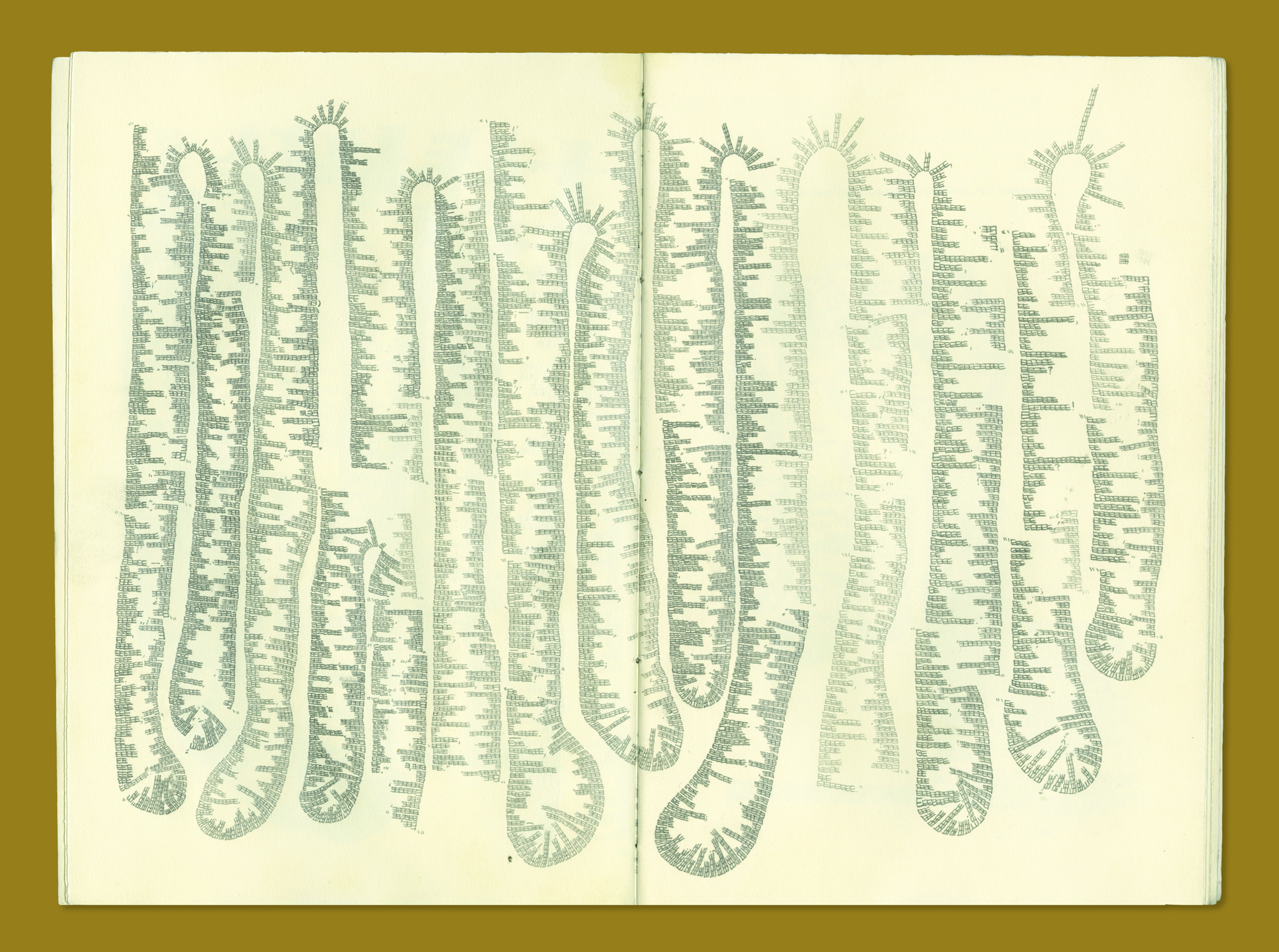(UPDATED, March 26, 2:10 p.m., to delete mention of Final Friday reception)
The ways in which language intersects with the material of art is being explored by the McIntire Department of Art through a four-artist exhibit at the University of Virginia’s Ruffin Hall Gallery through March 29.
Curated by Dean Dass, professor of studio art in the College of Arts & Sciences, “The End of Language” – the title pointing to the limits of language itself – assembles the work of four distinct artists committed to working within the divide between the linguistic and the visual. Each of these artists realize unique possibilities for making new art at a time when language is shifting and changing.
The participating artists are:
- Justin Quinn, an award-winning and prolific artist, exhibiting since 2001;
- Suzanne Silver, associate professor in the painting and drawing program at The Ohio State University;
- Adam Wolpa, a 1996 U.Va. studio art alumnus and associate professor in the Department of Art and Art History at Calvin College in Grand Rapids, Mich.; and
- Lauren Catlett, 2010 U.Va. studio art alumna and creator of “Shared Doings and Sayings,” an exhibit and expanding work that documents art-making exchanges with persons affected by dementia.
“Each of these artists has thought deeply about their works, working over a long period of time, and to bring them together into this collaborative venture has enriched the individual works,” Dass said. “These artists are not dismayed by the everyday failure of language; just the opposite. In the ruins, they see an opening and an opportunity.”
In her essay for the exhibit’s catalog, Monica McTighe, assistant professor of art at Tufts University and a Ph.D. graduate of U.Va.’s McIntire Department of Art, writes, “Regardless of how ideal and abstract it may seem, language is material. Language is a mark, a sound, an image, a breath. As such, language may be a visual or sculptural medium that can be molded and shaped, stretched or erased.”
Language and material is entangled in Silver’s work. Starting from a simple word or phrase, she uses various kinds of elements to summon forth meaning, playfully embodying language in her artwork in a variety of ways.
Words are cut out of clear vinyl or painted on aluminum foil or pressed into the surface of lined paper and plastic. In some of her pieces, Silver uses gold leaf to obscure words or employs embossing tape to press words into plastic strips.
The French avant-garde group, OuLiPo (or Ouvroir de Littérature Potentielle) produced literature based on mathematical formulas and chance. The writer Georges Perec, for instance, wrote an entire novel titled “The Disappearance of E” without using the letter E.
Like Perec, Quinn has a fondness for the letter E. His work renders words and sentences into visual structures or, as he calls them, “architectures.” In his art, capital letter E’s are stacked upon each other – the rhythm, flow and spacing of these collections of E’s following the text of a novel important to Quinn, Herman Melville’s “Moby Dick.”
Quinn’s work reveals the secret beauty that a single letter can possess and illustrates its versatile nature as a visual building block. His art shows how the pauses and rhythms in language are as important as the meaning.
Alphabets have always been used as a means to arrange things and provide a sense of order. Catlett uses alphabetic orders to provide an often-amusing sketch of culture. Her artwork combines scattered words and phrases culled from the Internet and organizes them into various kinds of patterns in her art books.
In “abc,” Catlett produces a catalogue of brand names, ads from stores and the names of celebrities who appear across the universe of social media. The book is composed of words collected on July 4, 2012 from Google dropdown lists for each letter of the alphabet with the search location set to Washington, D.C.
In “SCORE,” Catlett takes snippets of phrases from pop-up ads on the Internet from dating sites and get-rich-quick deals to underscore culture’s desperate need for love and freedom. As a kind of anxious poetry, the collection of phrases and questions starkly reveals how the cultural marketplace is ready to prey on human desires and anxieties.
Similarly, Catlett scoured the Web, picking up bits of found poetry, to create “Self Help,” a compendium of catchy phrases from pop psychology books and spiritual self-improvement methods. In this, too, there remains the evidence of a cultural need for a quick solution to life’s problems.
Wolpa creates assemblages of such unusual materials as cabbage, old cassette tapes, gasoline cans and tree branches wrapped in fabric. His work invites the viewer to discover connections among disparate parts to interpret its meaning.
Mixed in among the writings in his work are familiar quotations such as “Give me liberty or give me death!” and references to other artists’ work. These quotations suggest a key to unraveling a mystery to reveal the deeper meanings that the collected assortment of disparate objects and materials seem to convey.
“These artists, like artists in general perhaps, vacillate between trying to destroy or exact revenge upon language and using language in ways both symbolic and concrete to create new forms,” Dass said. “In his essay ‘Tradition and the Individual Talent,’ T.S. Eliot said that new forms often look formless and that only later, after time passes, do we recognize a form.”
Media Contact
Article Information
March 22, 2013
/content/uva-s-ruffin-gallery-exhibit-explores-language-art-end-language

